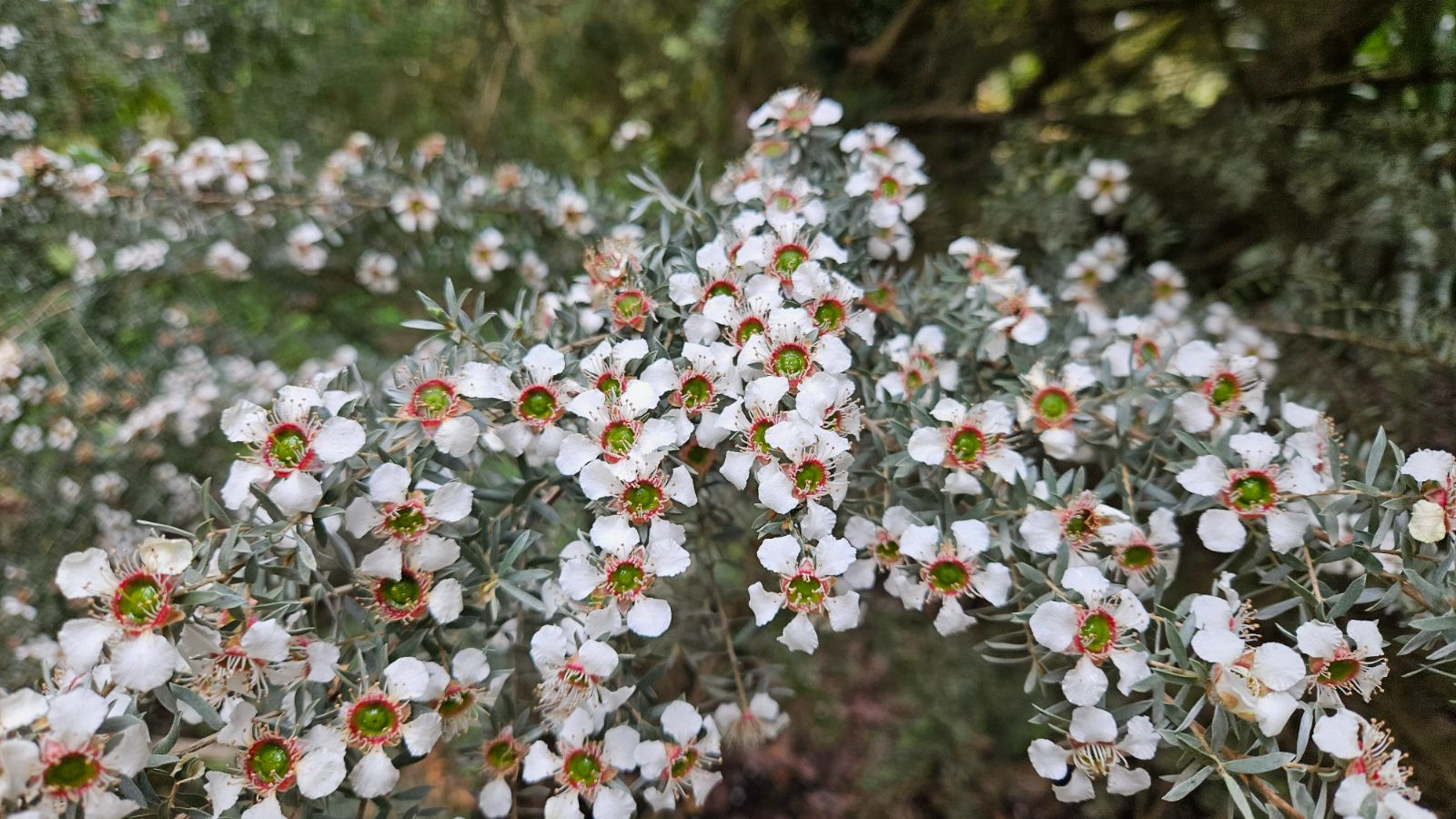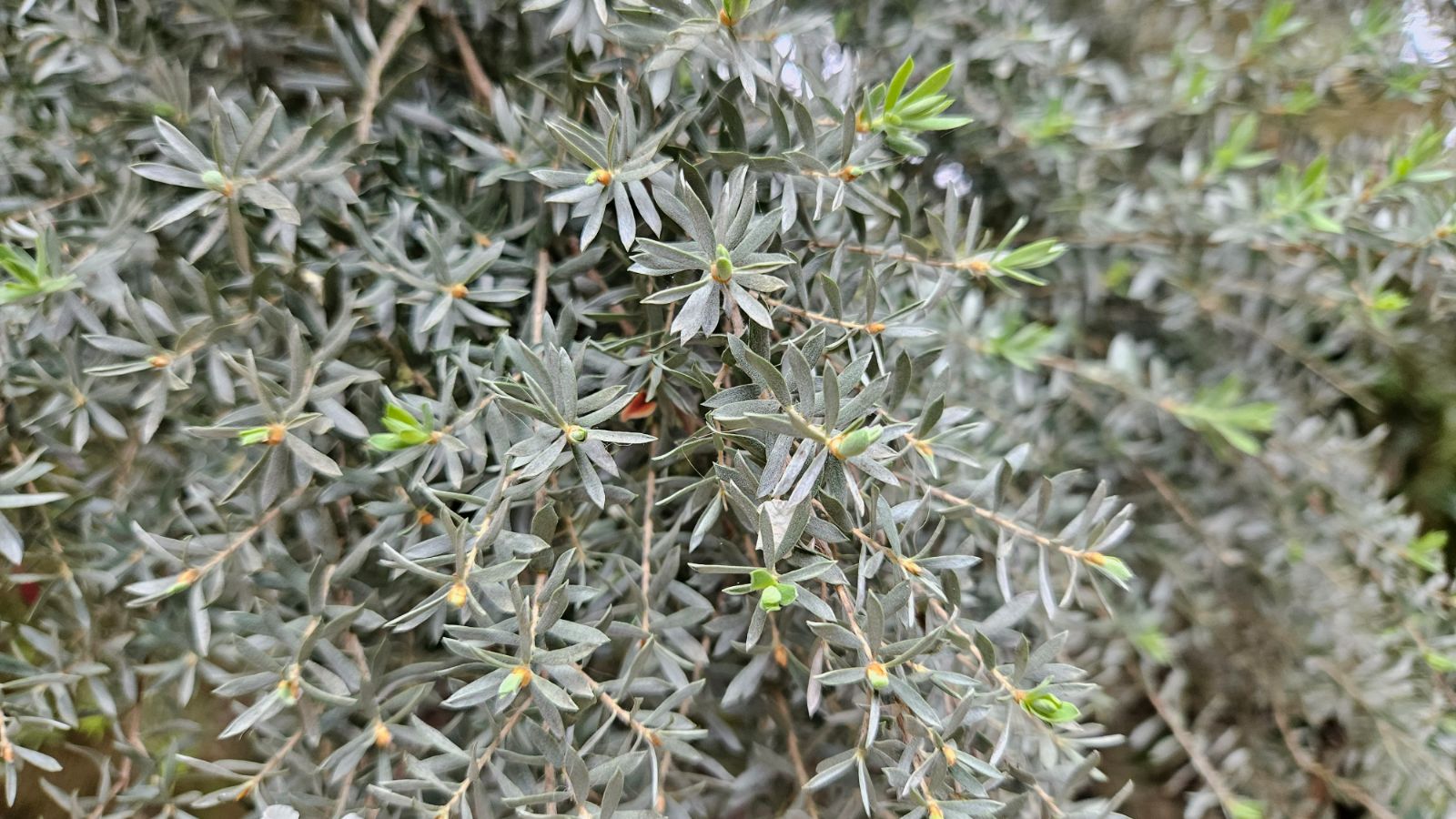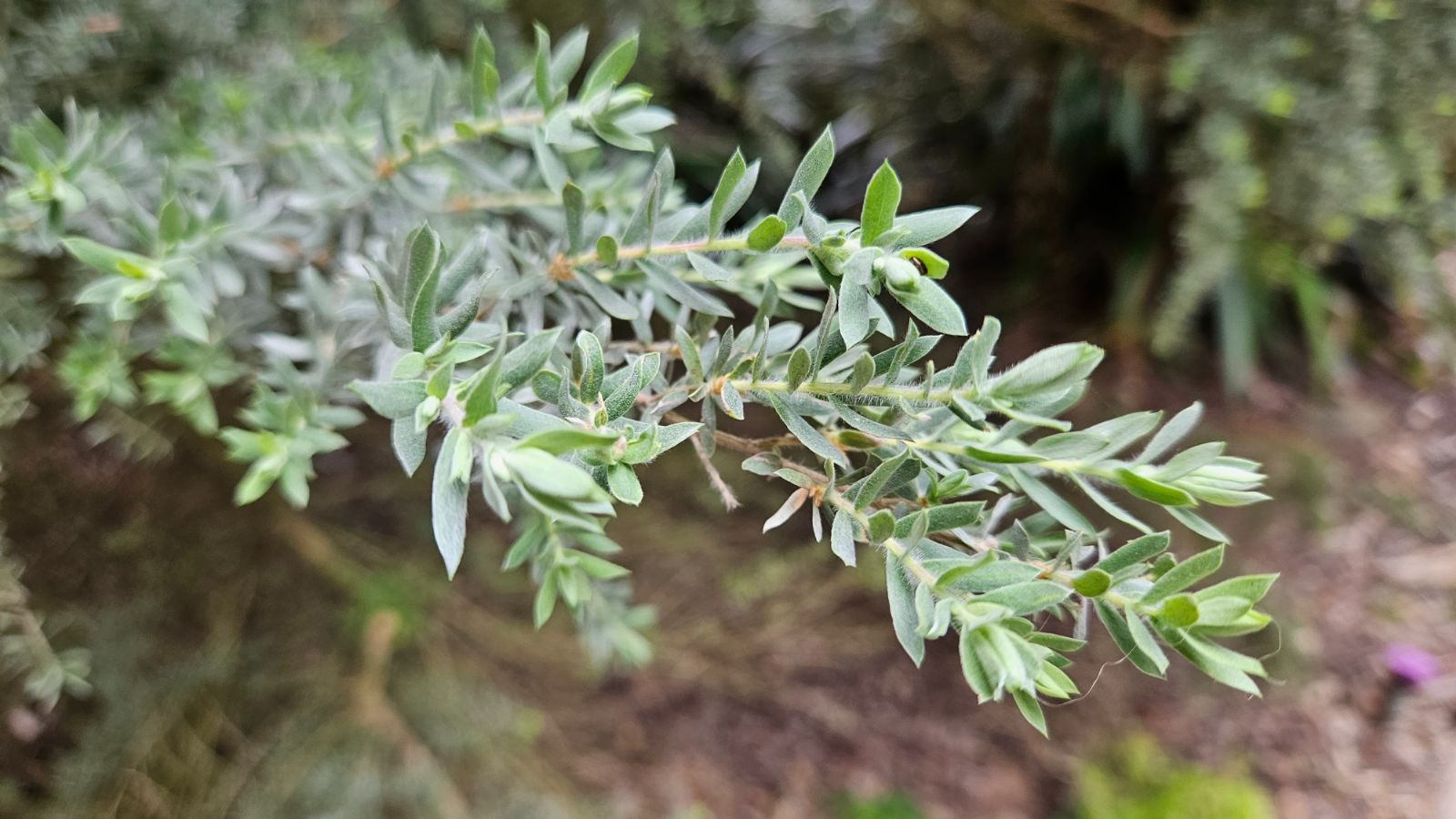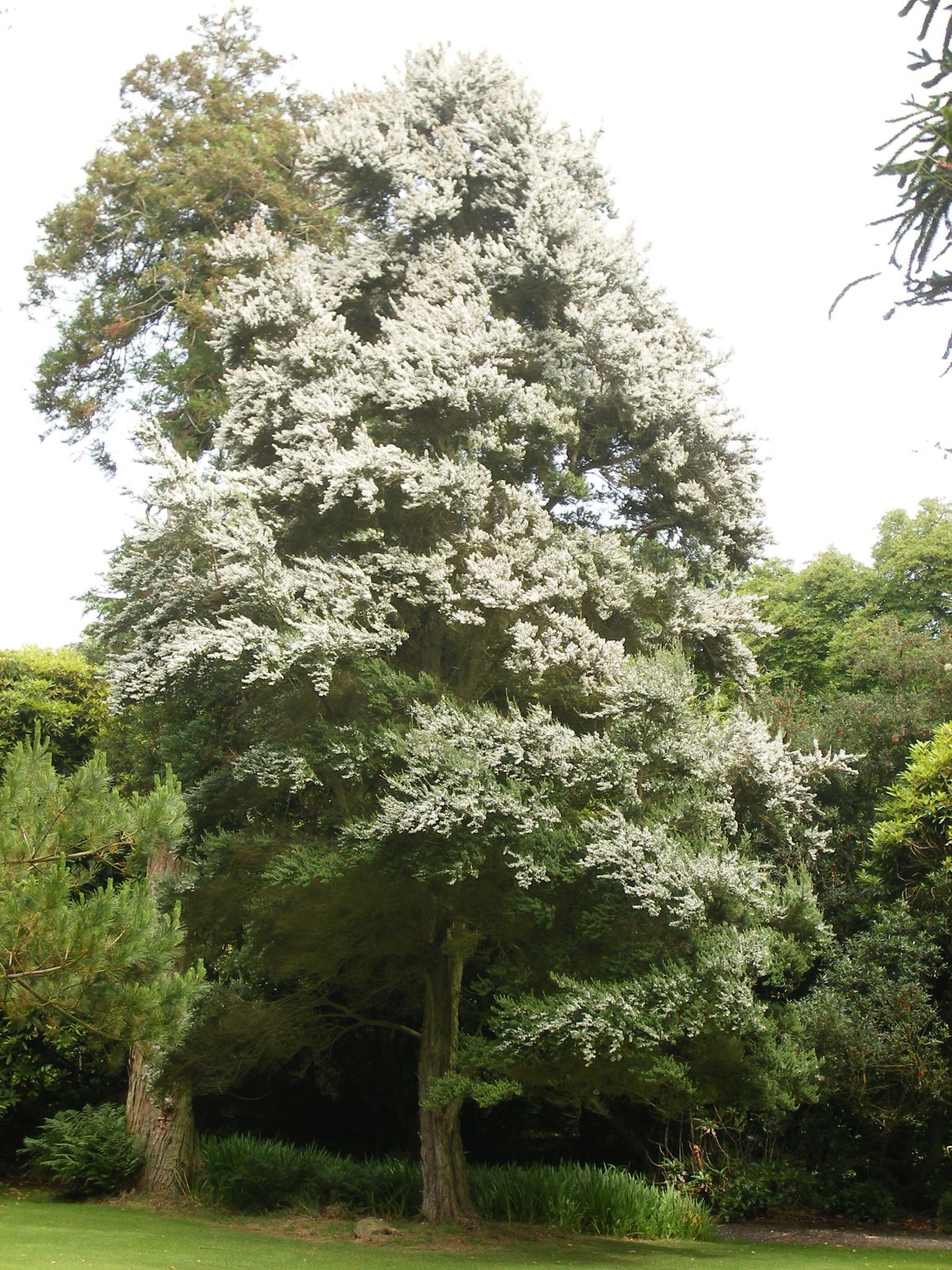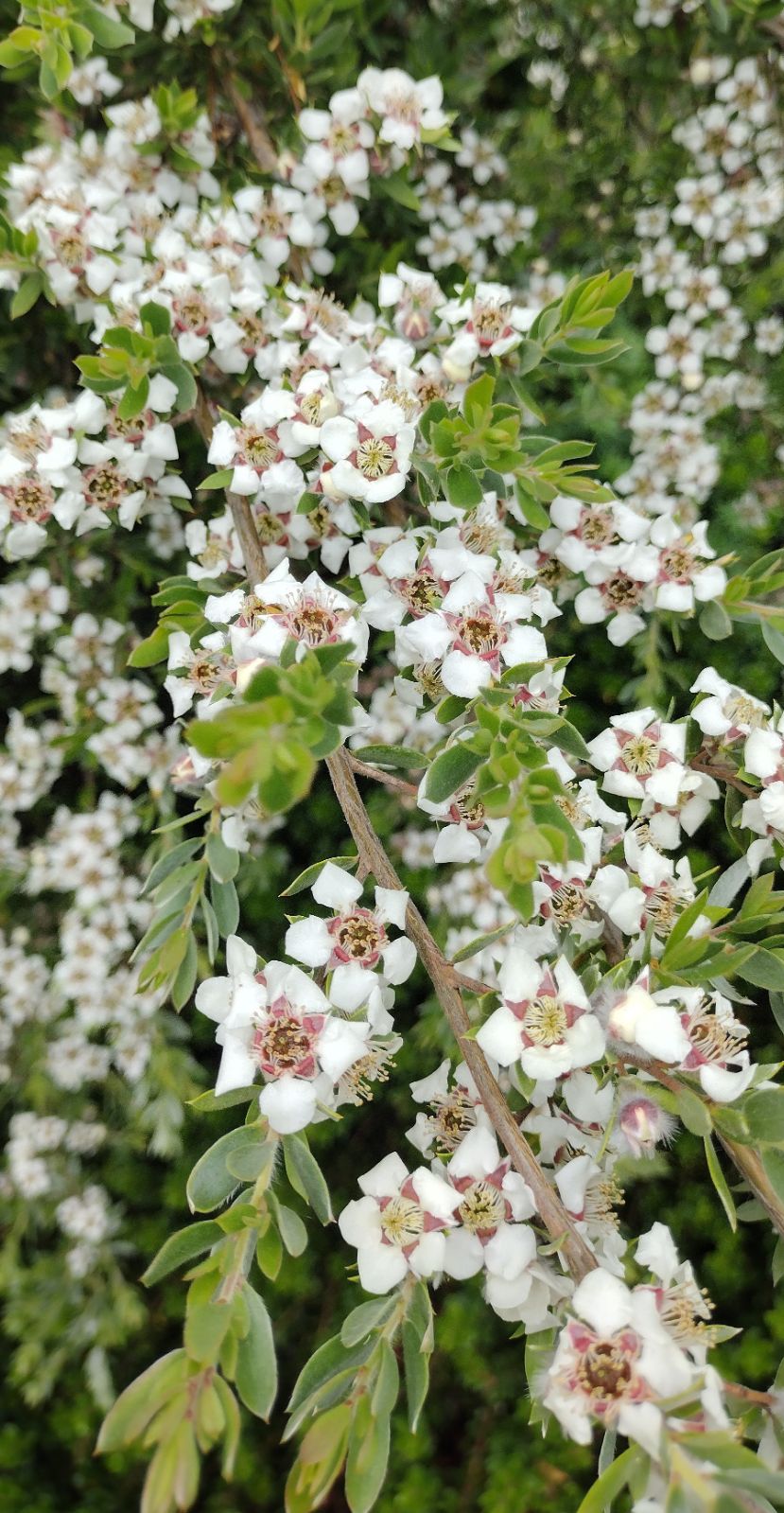Leptospermum lanigerum
Credits
Article from Bean's Trees and Shrubs Hardy in the British Isles
Recommended citation
'Leptospermum lanigerum' from the website Trees and Shrubs Online (treesandshrubsonline.
Genus
Synonyms
- Philadelphus laniger Ait.
- L. pubescens Lam.
- L. cunnitighamii Schauer
An evergreen shrub or small tree of erect habit, the slender twigs clothed with outstanding pale hairs. Leaves alternate, set about ten or twelve to the inch, obovate-oblong or oval, abruptly pointed, variable in size but usually 1⁄3 to 1⁄2 in. (occasionally 3⁄4 in.) long, about 1⁄8 in. wide, more or less silky, especially beneath, but sometimes glabrous and glossy green above. Flowers white, borne along or at the ends of leafy side growths; they are about 1⁄2 in. wide, the centre filled with a cluster of twenty to thirty stamens. Receptacle (calyx-tube) and sepals densely white-villous, the hairs appressed or spreading; sepals long-triangular and pointed or rounded-acuminate. Seed-vessel woody, nearly globose, 1⁄4 to 1⁄3 in. wide.
Native of Australia and Tasmania; introduced in 1774. This species seems to be hardier than the commoner L. scoparium. It was grown on a south wall at Kew and the winter of 1928–29, which very much injured L. scoparium, left it unaffected; it succumbed, however, during the hard winter of 1946–47. As long ago as 1879, a writer in the Gardeners’ Chronicle remarked on its hardiness against a wall in Lancashire. It is quite an attractive, very leafy evergreen, flowering from June onwards. It is variable in the size and silkiness of its leaves, also in the size of its flowers, which in Loddiges’ Cabinet, t. 1192, are depicted as 1 in. wide.
There are at least two forms of this variable species in general cultivation. The first is represented by plants at Wakehurst Place, Sussex, which derive from one given to Lord Wakehurst by Canon Boscawen of Ludgvan Rectory, Cornwall, about 1930 (Journ. R.H.S., Vol. 88, p. 163). It was received as L. cunninghamii and agrees quite well with it, but this species is now included without differentiation in L. lanigerum. In this form (which has been widely distributed under the name L. cunninghamii) the young growths are pinkish brown, the leaves grey, small (up to 1⁄2 in. long at the most and usually shorter), from narrowly to broadly obovate; the calyx-tube has rather short silky hairs. The flowering time of this form is usually late July or early August. It is fairly hardy (though it may lose most of its leaves in winter) and fruits abundantly, even excessively.
The second form has longer, relatively narrower leaves, up to 3⁄4 in. long, glossy and tinged with purple when young. The hairs on the calyx-tube are much longer than in the Ludgvan (Wakehurst) form, and the sepals are longer, concealing the petals even in the late bud-stage. It is also earlier flowering by two or three weeks. This is in cultivation as typical L. lanigerum. It is difficult for the non-botanist to believe that these two leptospermums belong to the same species.
Lord Talbot de Malahide has in his garden three further examples of L. lanigerum from Tasmania, collected in the wild. One, representing the form commonly met with there, resembles the Wakehurst clone but the leaves are narrower, oblong or narrow-obovate. The second, collected near Hobart by Mr Jackson, is of pendulous habit but similar in foliage to the preceding. The third is very distinct in having the leaves dark green and almost glabrous above; this is of fastigiate habit.

